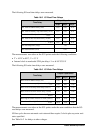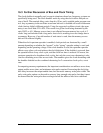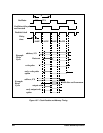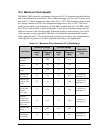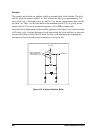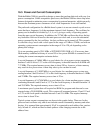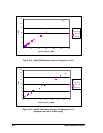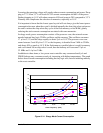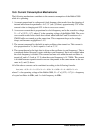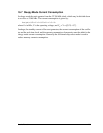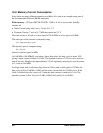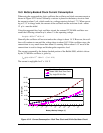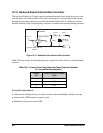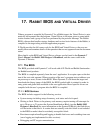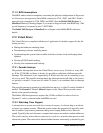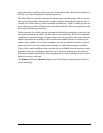
232 Rabbit 3000 Microprocessor
16.6 Current Consumption Mechanisms
The following mechanisms contribute to the current consumption of the Rabbit 3000
while it is operating.
1. A current proportional to voltage and clock frequency that results from the charging of
internal and external capacitances. At 3.3 V (see (2) below) approximately 57% of the
current is due to charging and 43% is due to crossover current.
2. A crossover current that is proportional to clock frequency and to the overdrive voltage
V
c
= V × [(V/2) – 0.7], where V is the operating voltage of the Rabbit 3000. The cross-
over current results from a brief short circuit when both the P and N transistors of a
CMOS buffer are turned on at the same time. This component drops as the voltage
drops, and becomes negligible at 1.4 V.
3. The current consumed by the built-in main oscillator when turned on. This current is
also proportional to V
c
, and is equal to 1 mA at 3.3 V.
4. The current drawn by the logic that is driven at the oscillator (crystal frequency). This is
considered distinct because it varies with the crystal frequency, but is not reduced when
the clock frequency is divided. This current becomes zero when the main oscillator is
turned off, and is 2.5 mA at 3.3 V when the crystal frequency is 14.7 MHz. This current
is divided between capacitive and crossover components in the same manner as the cur-
rents in (1) and (2) above.
All of the above currents can be combined according to the following formula:
I
total
(mA) = 0.32 × V × f + 0.23 × Vc × f + 0.30 × Vc + 0.029 × V × fc + 0.025 × Vc × fc
where V = the operating voltage of the Rabbit 3000, V
c
= V × [(V/2) – 0.7], f
c
= frequency
of crystal oscillator in MHz, and f = clock frequency in MHz.



